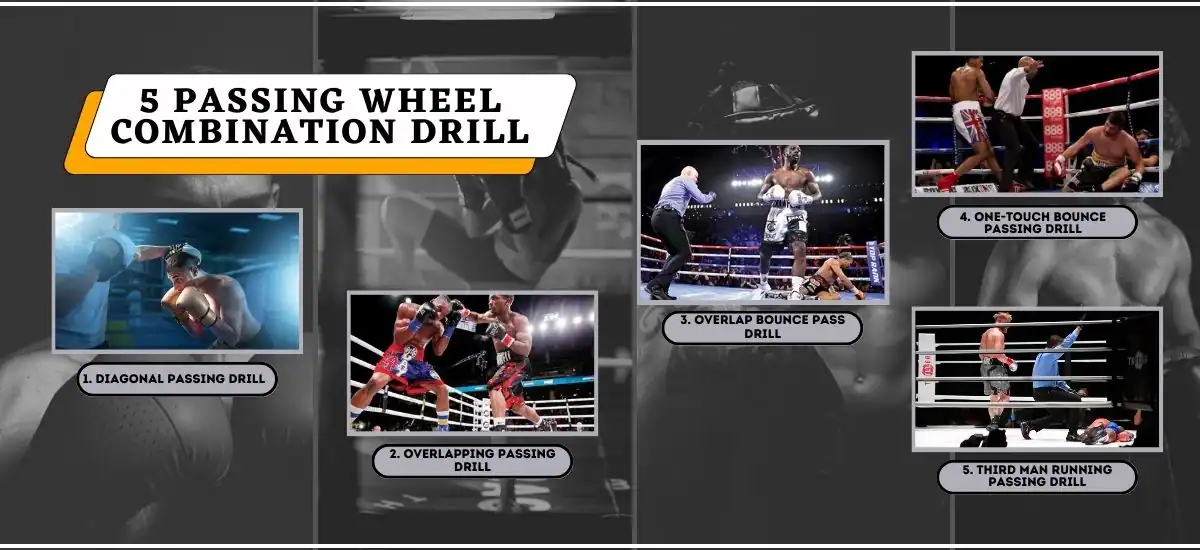5 Passing Wheel Combination Drill
One of the most crucial elements of Boxing is passing, particularly at a time when many coaches want their teams to control the ball. If used often, these five combo workouts can strengthen your players’ control & passing technique. Diagonal passing Pass

Let me share some of the activities I’ve used in my coaching sessions to help various age groups. If used often, these five combo workouts can strengthen your players’ control & passing technique.
- Diagonal passing drill
- Overlapping Passing drill
- Overlap bounce pass drill
- One-touch bounce passing drill
- Third man running passing drill
1. Diagonal Passing Drill
This exercise improves the player’s natural ability to play diagonal passes.
2. Overlapping Passing Drill
This passing exercise adds the goal of finishing an overlapping run to enhance (or maintain) the players’ passing skills.
3. Overlap Bounce Pass Drill
In this exercise, the athletes must respond fast to change positions after each pass so they may receive another one from a teammate.
4. One-Touch Bounce Passing Drill
This rapid-fire exercise aims to enhance our players’ first-touch short-passing skills.
5. Third Man Running Passing Drill
This passing exercise is excellent for teaching young athletes the significance of prolonging their run to catch the second or third pass.
What Are The Technical Points To Coach Good Passing ?

Some essential components of the fundamentals of passing a ball include the following.
- Body shape
- Weight of pass
- Timing of the pass
- Vision to see where teammates are positioned
1. Body shape:
To properly position the player with the ball & guarantee effective passing, the body form is essential. Many young players patiently wait impatiently for the ball, which prevents them from organizing their feet in time when it does.
They will be able to shift their feet, get lined up with the ball, and afterward be in a better position to handle the ball if it is emphasized that they must be aware and on their feet. When the player is prepared to pass, they must stand with one foot next to the other and the ball, leaving a tiny gap between them while pointing in the desired direction.
2. Weight of pass:
The pass’s weight may significantly influence the receiver’s decision on what to do with the ball next. The following situations might affect how much the access weighs:
- Distance of the pass
- if the target player is closely indicated
- facilitating a teammate’s first-ever cross or shot
3. Timing of the pass:
When passing a ball, timing is crucial. It entails picking the ideal timing to send the ball depending on how the passer and receiver move. The efficiency of the pass is increased by accurate timing, which enables teammates to receive it quickly and take advantage of any openings or possibilities.
4. Vision to see where teammates are positioned:
Passing effectively requires having decent field vision. It entails continuously scanning the area to spot teammates’ positions and movements. A passer may make educated selections and choose the best-passing alternatives to keep possession or generate scoring chances by being aware of their placements.
Read More:

